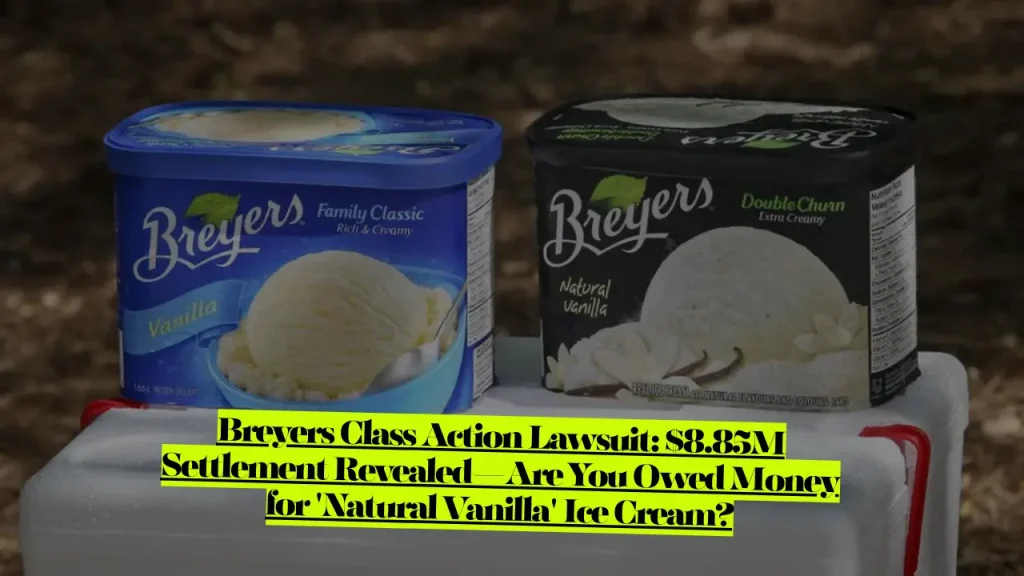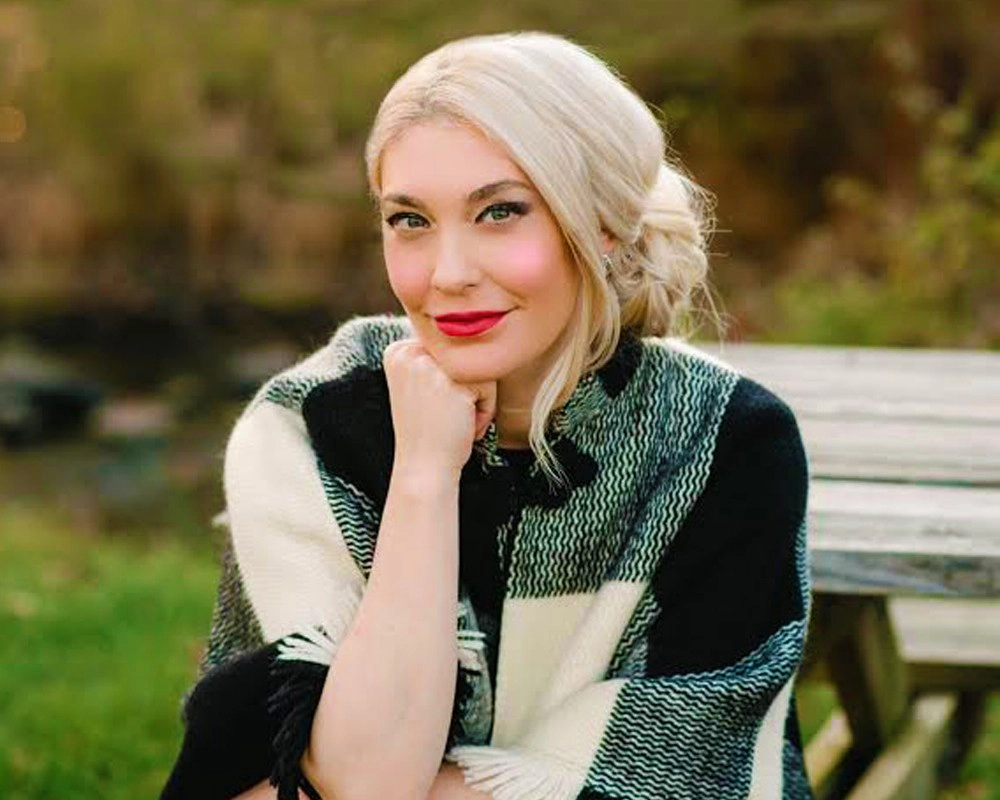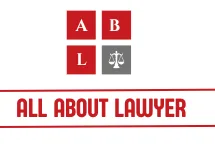Breyers Class Action Lawsuit, $8.85M Settlement Revealed—Are You Owed Money for ‘Natural Vanilla’ Ice Cream?
What You Need to Know Right Now
If you’ve bought Breyers Natural Vanilla ice cream since 2016, you might be entitled to cash from an $8.85 million class action settlement—but the claim deadline has passed. The court approved the final settlement on November 21, 2024, though the deadline to file claims was February 19, 2025. While this particular settlement window has closed, understanding what happened reveals important consumer protection issues that could affect future food labeling cases.
The Quick Facts:
- Settlement Amount: $8.85 million
- What Happened: Lawsuit alleged Breyers marketed ice cream as containing real vanilla when it allegedly contained synthetic vanilla flavoring
- Who Was Affected: Anyone who purchased Breyers Natural Vanilla ice cream between April 21, 2016 and August 14, 2024
- Payment Structure: $1.00 per product with proof of purchase (unlimited), or $1.00 per product without proof (maximum 8 products)
- Current Status: Settlement approved, claim deadline passed, payments pending after appeals
This case matters because it’s part of a larger wave of consumer protection lawsuits targeting misleading food labeling—and it was filed by attorney Spencer Sheehan, who has brought more than 400 similar lawsuits targeting vanilla labeling.
The Vanilla Deception: What Breyers Was Accused Of
Here’s what made consumers feel betrayed: when you see “Natural Vanilla” printed prominently on an ice cream carton, you expect vanilla beans. Real vanilla. The kind that comes from actual vanilla plants.
The lawsuit claimed Breyers Natural Vanilla ice cream contained, at most, a small amount of real vanilla despite certain representations on the product’s labels. According to court documents, the company allegedly used vanilla flavoring that didn’t come exclusively from vanilla beans—instead relying on synthetic or non-vanilla plant sources to create that vanilla taste.
The key allegation? Breyers Natural Vanilla ice cream contains non-vanilla plant vanilla flavors and vanilla enhancers that are not disclosed on the product packaging or label. Think of it like this: if a restaurant advertises “100% real butter” but uses margarine mixed with butter, you’d feel misled. That’s essentially what plaintiffs claimed happened here.
Why This Matters to Your Wallet: Based on the ‘natural vanilla’ label claim, the ice cream company charges a price premium of around $1.00 compared to competitors. You paid extra for what you thought was premium, real vanilla—but allegedly got something less authentic.
What Breyers Says: Breyers, owned by Unilever, denies any wrongdoing. Breyers hasn’t admitted any wrongdoing but agreed to pay $8.85 million to resolve the false advertising class action lawsuit. This is standard in class action settlements—companies often settle to avoid expensive litigation without admitting fault.
Meet the “Vanilla Vigilante” Behind the Lawsuit
This lawsuit wasn’t filed by a random frustrated consumer. The lawsuit was filed by New York firms Reese LLP and Sheehan and Associates, led by Spencer Sheehan, who has earned himself the nickname “Vanilla Vigilante” for bringing more than 400 lawsuits of this kind.
Spencer Sheehan has become legendary (or notorious, depending on who you ask) in food litigation circles. Sheehan, a New York native and former Marine, has filed more than 100 potential class action lawsuits over vanilla and vanilla flavoring since 2019.
His targets have included household names:
- A&W sodas
- Chobani yogurts and creamers
- Celestial Seasonings teas
- Nestle’s Dreyer’s ice cream
- Monster Energy drinks
- Coca-Cola products
The Controversy: Sheehan’s approach has sparked fierce debate. A federal judge described Sheehan as a “wrecking ball” and held him in civil contempt for filing a complaint without adequate supporting evidence in a Starbucks case. Some judges have dismissed his cases as frivolous, while consumer advocates see him as protecting shoppers from deceptive labeling.
Attorneys working with Sheehan argue these are important consumer protection cases because companies are making false and deceptive front label claims. The core question: Should companies be held accountable when their marketing creates misleading impressions, even if ingredient lists tell the technical truth?

How Class Action Settlements Actually Work (Plain English Explanation)
If you’re new to class action lawsuits, here’s what you need to know. A class action allows one person (or a small group) to sue on behalf of thousands or millions of people who suffered similar harm.
The Key Players:
- Lead Plaintiffs: The named individuals who file the lawsuit
- Class Members: Everyone affected (in this case, Breyers Natural Vanilla buyers)
- Defendants: The companies being sued (Conopco, Inc. and Unilever United States, Inc.)
- Settlement Administrator: A neutral third party (Epiq) who manages claims and payments
How Money Gets Distributed: When a settlement is reached, companies create a settlement fund—in this case, $8.85 million. This money gets divided among all eligible claimants who file valid claims. The more people who claim, the less each person typically receives (though in this case, payments were capped at $1 per product).
Your Rights in a Class Action:
- Do Nothing: You’re automatically included in the settlement
- File a Claim: Submit paperwork to receive money
- Opt Out: Exclude yourself to preserve your right to sue individually
- Object: Tell the court why you think the settlement is unfair
For most lawsuits, it’s only in the event of a class action settlement that people covered by a case need to act—by filling out and filing a claim form online or by mail by the settlement deadline.
Understanding consumer rights in class action settlements helps you protect yourself when companies settle similar cases in the future.
Who Was Eligible and How Much Money Could You Get?
Eligibility Requirements: You may be included in the settlement if you purchased Breyers Natural Vanilla ice cream in any size in the United States from April 21, 2016 through August 14, 2024.
This covered ALL sizes and packaging variations:
- 1.5-quart (1.41L) cartons
- 16-oz cartons
- 10-pack of 3-oz cups
- Any other size sold during the eligibility period
Payment Breakdown: The compensation structure was straightforward:
- WITH Proof of Purchase: $1.00 per product, unlimited claims
- WITHOUT Proof of Purchase: $1.00 per product, maximum 8 products (capped at $8.00)
Let’s put this in perspective: If you saved receipts showing you bought 50 cartons over the years, you could have claimed $50. If you couldn’t find receipts but remembered buying the product regularly, you could still claim up to $8.
Why Such Small Amounts? Class actions distribute money among potentially millions of claimants. Settlement class members who submit a valid claim form are eligible for a cash payout, though the final amount depends on the total number of valid claims filed. Even small payouts matter—$8 might cover your next pint of truly premium ice cream.
Similar food labeling class action settlements typically follow this pattern: modest per-person payments but meaningful accountability for corporations.
The Claims Process: What You Needed to Do
While the deadline has passed for this settlement, understanding the process helps if you’re affected by future class actions.
Step 1: Verify Eligibility Check whether you purchased the specific product during the eligible timeframe. If you purchased Breyers Natural Vanilla ice cream in any size between April 21, 2016, and August 14, 2024, you’re considered an eligible Settlement Class Member.
Step 2: Gather Documentation (If Possible)
- Credit card statements
- Store receipts
- Bank statements showing purchases
- Loyalty card records
Step 3: File Your Claim Eligible consumers must submit a claim by February 19, 2025, either online through the settlement website or via mail. The official settlement website was VanillaIceCreamSettlement.com.
Step 4: Wait for Payment Payments will be made to eligible Settlement Class Members after any appeals are resolved. The appeals process can take time, perhaps more than a year.
Pro Tip for Future Settlements: Class members are required to submit a claim form to the administrator to prove they are entitled to part of the settlement—if you do nothing, you receive nothing. Many people miss out on settlement money simply because they don’t file claims. Visit sites like ClassAction.org regularly to check for settlements you might qualify for.
If you’re dealing with consumer fraud claims, knowing how to properly document purchases can significantly impact your compensation.
Timeline: From Lawsuit to Settlement Approval
Understanding how this case unfolded reveals how long class actions take:
June 2024: The class-action lawsuit was filed with the Supreme Court of the State of New York, Bronx County
August 14, 2024: Class period ended (last date of eligible purchases)
September 2024: Settlement reached; public notice begins
October 31, 2024: Deadline to opt out or object to settlement
November 21, 2024: Court granted Final Approval of the Settlement
February 19, 2025: Deadline to submit a claim form passed
Future: Payments distributed after appeals are resolved
This 8+ month timeline from filing to final approval is actually relatively fast for class actions. Some cases drag on for years before settlements are reached.
What Happens Next: Appeals and Payment Distribution
Even though the settlement was approved, the waiting game isn’t over.
The Appeals Process: While the court granted final approval to the vanilla ice cream settlement on November 21, 2024, there remains the possibility of appeals. Any party that objected to the settlement could file an appeal, which would delay payments further.
When Will Payments Arrive? If you filed a valid claim, patience is required. If you file a valid and timely claim form, you will not receive a cash payment until any appeals are resolved. This could take months or even over a year.
Tracking Your Claim: The settlement administrator (Epiq) typically sends confirmation emails when claims are received. You can check claim status through:
- Phone: 1-888-603-5137
- Email: [email protected]
- Website: VanillaIceCreamSettlement.com
What If You Missed the Deadline? Unfortunately, the deadline to submit a claim form passed on February 19, 2025. Missing this deadline means you cannot receive settlement compensation from this particular case.
However, if you believe you purchased Breyers Natural Vanilla during the eligible period but missed filing, keep this lesson in mind for future settlements. Setting up alerts through class action settlement tracking websites can ensure you never miss another opportunity.

The Bigger Picture: Food Labeling Lawsuits Are Exploding
The Breyers case is just one battle in a much larger war over food labeling honesty.
Why Vanilla Has Become Ground Zero: Vanilla is expensive. Real vanilla beans are the second most expensive spice after saffron, costing around $50-600 per pound depending on quality. Companies have strong financial incentives to use cheaper alternatives while maintaining “vanilla” marketing.
The Wave of Vanilla Litigation: More than 120 suits have been filed over the past two years relating to vanilla, representing about a quarter of overall food litigation filings in 2019 and 2020.
Targets have included:
- Ice cream brands (Breyers, Dreyer’s)
- Yogurt companies (Chobani)
- Beverage manufacturers (sodas, protein shakes)
- Tea and coffee products
Similar Recent Settlements:
- Blue Diamond Almond Breeze: $2.6 million settlement over vanilla-flavored almond milk
- Orgain Almond Milk: Class action pending over vanilla flavoring claims
Court Pushback: Not all vanilla lawsuits succeed. Courts in New York dismissed complaints challenging vanilla-flavoring claims four separate times over a 12-month period, concluding that no ‘reasonable consumer’ is misled by a claim indicating a product is flavored with vanilla when it actually tastes like vanilla.
This raises philosophical questions: When does marketing become deception? If a product tastes like vanilla and lists vanilla-related ingredients, should consumers expect 100% natural vanilla beans?
If you’re interested in product liability cases involving misleading labeling, this trend shows no signs of slowing.
Consumer Protection: What This Means for Your Shopping Habits
The Breyers settlement offers valuable lessons for grocery shopping:
Read Beyond the Front Label: Front-of-package marketing uses emotional language and imagery to sell products. The Nutrition Facts and ingredient list on the back tell the legal truth. Look for specific phrases:
- “Natural Vanilla Flavor” vs. “Vanilla Flavoring”
- “Made with Real Vanilla” vs. “Vanilla Flavored”
- Check ingredient lists for “vanilla extract” or “vanilla bean”
Understand Premium Pricing: Based on the ‘natural vanilla’ label claim, companies charge price premiums compared to competitors. If you’re paying extra for “natural” or “real” ingredients, verify those claims in the ingredient list.
Document Your Purchases: In our digital age, proof of purchase is easier than ever:
- Use store loyalty cards (creates purchase history)
- Save digital receipts via email
- Photograph paper receipts with your phone
- Use receipt-tracking apps like Fetch or Receipt Hog
Stay Informed About Settlements: Websites that track class action settlements include:
- ClassAction.org
- TopClassActions.com
- OpenClassActions.com
Report Misleading Claims: If you believe you’ve been deceived by product labeling:
- Contact the company directly
- File complaints with the FTC (consumer.ftc.gov)
- Report to your state attorney general’s consumer protection division
Legal Expert Analysis: Will This Change Food Labeling?
The Breyers settlement raises important questions about corporate accountability and consumer expectations.
The Pro-Consumer Argument: Consumer advocates argue that prominent “Natural Vanilla” marketing creates reasonable expectations about ingredients. Legal experts working on these cases contend they are important consumer protection cases because companies are making false and deceptive front label claims that deceive reasonable consumers nationwide.
When companies charge premium prices based on “natural” claims, consumers deserve truth in advertising. The settlement forces Breyers to pay millions for allegedly misleading marketing.
The Defense Perspective: Critics of these lawsuits argue they’re frivolous and that courts have reasonably concluded that no ‘reasonable consumer’ is misled by a claim indicating that a product is flavored with vanilla when that product, in fact, tastes like vanilla.
The ingredient list legally discloses what’s in the product. If consumers don’t read labels, should companies be penalized? Some judges have grown frustrated with the volume of vanilla litigation flooding courts.
The Middle Ground: The settlement itself represents compromise. Breyers hasn’t admitted any wrongdoing but agreed to pay $8.85 million to resolve the false advertising class action lawsuit. This allows both sides to move forward without years of expensive litigation.
What Could Change: The Unilever-owned brand has committed to reformulating the ice cream to remove any non-vanilla plant-derived flavors. This suggests the case achieved its goal—pushing companies toward more truthful labeling and authentic ingredients.
Similar false advertising class action lawsuits continue to reshape how companies market products.
Frequently Asked Questions
Q: Can I still file a claim for the Breyers settlement?
No. The deadline to submit a claim form passed on February 19, 2025. The claims window has closed, and late claims cannot be accepted.
Q: When will settlement checks be mailed?
Payments will be made to eligible Settlement Class Members after any appeals are resolved. This timing depends on whether anyone appeals the settlement and how long that process takes.
Q: What if I bought Breyers Natural Vanilla but didn’t file a claim?
Unfortunately, you’ve missed this opportunity. If you do nothing, you receive nothing—class members are required to submit a claim form to receive compensation.
Q: Will Breyers change its product because of this lawsuit?
Yes. Breyers has committed to reformulating the ice cream to remove any non-vanilla plant-derived flavors. This means future products should contain only real vanilla flavoring.
Q: How do I find out about class action settlements I might qualify for?
Visit settlement tracking websites like ClassAction.org, TopClassActions.com, or OpenClassActions.com regularly. You can also sign up for email alerts about new settlements in categories that interest you.
Q: Are there other similar food labeling settlements right now?
Yes! Food and beverage companies face ongoing litigation over labeling claims. Check settlement databases for current cases involving misleading advertising, false health claims, and ingredient disputes. Recent examples include tequila labeling lawsuits and various beverage cases.
Q: Can I sue Breyers individually even though there’s a settlement?
No. If you didn’t opt out by the October 31, 2024 deadline, you’re bound by the settlement terms. If you want to keep the right to sue or continue to sue the released parties for the legal claims in this lawsuit, you must have taken steps to exclude yourself from the settlement.
Q: Why do settlement amounts seem so small compared to company revenues?
Class actions distribute funds among potentially millions of claimants. While $1 per product seems modest, the $8.85 million total represents meaningful accountability. Additionally, settlements often drive policy changes worth more than cash payments—like Breyers reformulating its product.
Q: Who was Spencer Sheehan and why does he file so many vanilla lawsuits?
Spencer Sheehan is a New York attorney and former Marine who has filed more than 100 class action lawsuits over vanilla and vanilla flavoring since 2019. He believes companies systematically mislead consumers about vanilla content and has made it his mission to hold them accountable.
Related Class Action Cases You Should Know About
If the Breyers settlement interests you, these similar cases might affect you:
Active Food & Beverage Settlements:
- Panera Bread Class Action Settlement – Claims for charged lemonade issues
- Yahoo Class Action Settlement – $405 payment for privacy violations
- Don Julio & Casamigos Tequila Lawsuit – 100% agave claims challenged
Other Consumer Protection Cases:
- Progressive Insurance Class Actions – Over $200 million in settlements
- Temu Privacy Settlement – Up to $5,000 for data violations
- AT&T Class Action – $177 million billing settlement
Understanding Your Rights:
- How Class Action Lawsuits Work
- Product Liability Claims Explained
- Consumer Rights in False Advertising Cases
Key Takeaways: What You Must Remember
The Breyers Natural Vanilla class action settlement represents both an ending and a beginning—the conclusion of one case and the continuation of broader fights over food labeling honesty.
The Bottom Line:
- An $8.85 million settlement was reached in a class action lawsuit against Conopco, Inc. and Unilever United States, Inc. over Breyers Natural Vanilla ice cream labeling
- Claims alleged the “Natural Vanilla” label misled consumers about vanilla content
- The claim deadline has passed (February 19, 2025), but appeals could delay payments
- Breyers has committed to reformulating the product to remove non-vanilla plant-derived flavors
- This case is part of a larger trend of vanilla-related food labeling litigation
What This Means for You: Even if you missed this settlement, understanding class actions helps you:
- Recognize when you might be affected by future settlements
- Know how to document purchases for potential claims
- Understand your consumer rights when companies make misleading claims
- Stay informed about active settlements through tracking websites
The Bigger Picture: The Breyers case highlights tension between marketing language and technical accuracy. As consumers, we rely on companies to market products truthfully. When “Natural Vanilla” means something less than pure vanilla beans, legal mechanisms like class actions provide accountability.
Whether you see Spencer Sheehan as a consumer champion or a litigation opportunist, his cases have forced food companies to reconsider labeling practices. This settlement provides a means for affected consumers to receive financial compensation but also sets a precedent that could encourage stricter labeling standards across the food industry to protect consumer interests.
Stay Vigilant: The next time you’re in the grocery store, remember the Breyers case. Read ingredient lists carefully. Question premium pricing claims. And most importantly, check settlement tracking websites regularly—you might be entitled to compensation from class actions you didn’t even know existed.
Important Note: This article provides educational information about the Breyers class action settlement and consumer protection laws. It is not legal advice. If you have specific questions about class action claims, settlements, or consumer rights, consult with a qualified attorney in your jurisdiction.
Sources:
- Official Settlement Website: VanillaIceCreamSettlement.com
- Settlement Administrator Contact: 1-888-603-5137
- McKinley et al. v. Conopco, Inc. et al., Index No. 805260/2024E (Supreme Court of New York, Bronx County)
Last Updated: November 27, 2025
About the Author

Sarah Klein, JD, is a licensed attorney and legal content strategist with over 12 years of experience across civil, criminal, family, and regulatory law. At All About Lawyer, she covers a wide range of legal topics — from high-profile lawsuits and courtroom stories to state traffic laws and everyday legal questions — all with a focus on accuracy, clarity, and public understanding.
Her writing blends real legal insight with plain-English explanations, helping readers stay informed and legally aware.
Read more about Sarah
